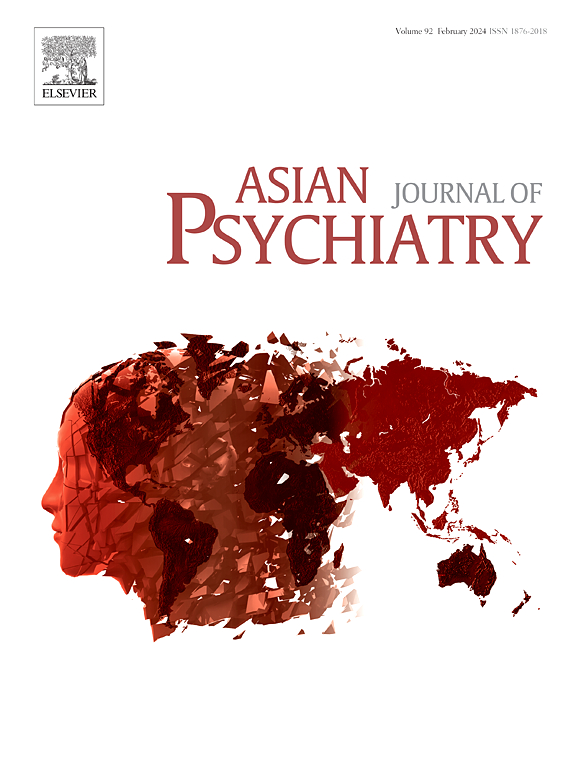Machine learning prediction prior to onset of mild cognitive impairment using T1-weighted magnetic resonance imaging radiomic of the hippocampus
IF 3.8
4区 医学
Q1 PSYCHIATRY
引用次数: 0
Abstract
Background
Early identification of individuals who progress from normal cognition (NC) to mild cognitive impairment (MCI) may help prevent cognitive decline. We aimed to build predictive models using radiomic features of the bilateral hippocampus in combination with scores from neuropsychological assessments.
Methods
We utilized the Alzheimer's Disease Neuroimaging Initiative (ADNI) database to study 175 NC individuals, identifying 50 who progressed to MCI within seven years. Employing the Least Absolute Shrinkage and Selection Operator (LASSO) on T1-weighted images, we extracted and refined hippocampal features. Classification models, including Logistic Regression (LR), Support Vector Machine (SVM), Random Forest (RF), and light gradient boosters (LightGBM), were built based on significant neuropsychological scores. Model validation was conducted using 5-fold cross-validation, and hyperparameters were optimized with Scikit-learn, using an 80:20 data split for training and testing.
Results
We found that the LightGBM model achieved an area under the receiver operating characteristic (ROC) curve (AUC) value of 0.89 and an accuracy of 0.79 in the training set, and an AUC value of 0.80 and an accuracy of 0.74 in the test set.
Conclusion
The study identified that T1-weighted magnetic resonance imaging radiomic of the hippocampus would be used to predict the progression to MCI at the normal cognitive stage, which might provide a new insight into clinical research.
使用海马t1加权磁共振成像放射学进行轻度认知障碍发病前的机器学习预测
背景:准确识别从正常认知(NC)发展到轻度认知障碍(MCI)的个体可能有助于预防认知能力下降。我们的目的是利用双侧海马体的放射学特征结合神经心理学评估的评分来建立预测模型。方法利用阿尔茨海默病神经影像学倡议(ADNI)数据库对175名NC患者进行研究,确定了50名在7年内进展为MCI的患者。采用最小绝对收缩和选择算子(LASSO)对t1加权图像进行特征提取和细化。基于显著性神经心理评分,建立了Logistic回归(LR)、支持向量机(SVM)、随机森林(RF)和光梯度增强器(LightGBM)等分类模型。使用5倍交叉验证进行模型验证,并使用Scikit-learn优化超参数,使用80:20的数据分割进行训练和测试。结果LightGBM模型在训练集上的受试者工作特征曲线下面积(AUC)为0.89,准确率为0.79;在测试集上的AUC为0.80,准确率为0.74。结论本研究发现海马t1加权磁共振成像放射学可用于预测正常认知期MCI的进展,为临床研究提供新的思路。
本文章由计算机程序翻译,如有差异,请以英文原文为准。
求助全文
约1分钟内获得全文
求助全文
来源期刊

Asian journal of psychiatry
Medicine-Psychiatry and Mental Health
CiteScore
12.70
自引率
5.30%
发文量
297
审稿时长
35 days
期刊介绍:
The Asian Journal of Psychiatry serves as a comprehensive resource for psychiatrists, mental health clinicians, neurologists, physicians, mental health students, and policymakers. Its goal is to facilitate the exchange of research findings and clinical practices between Asia and the global community. The journal focuses on psychiatric research relevant to Asia, covering preclinical, clinical, service system, and policy development topics. It also highlights the socio-cultural diversity of the region in relation to mental health.
 求助内容:
求助内容: 应助结果提醒方式:
应助结果提醒方式:


